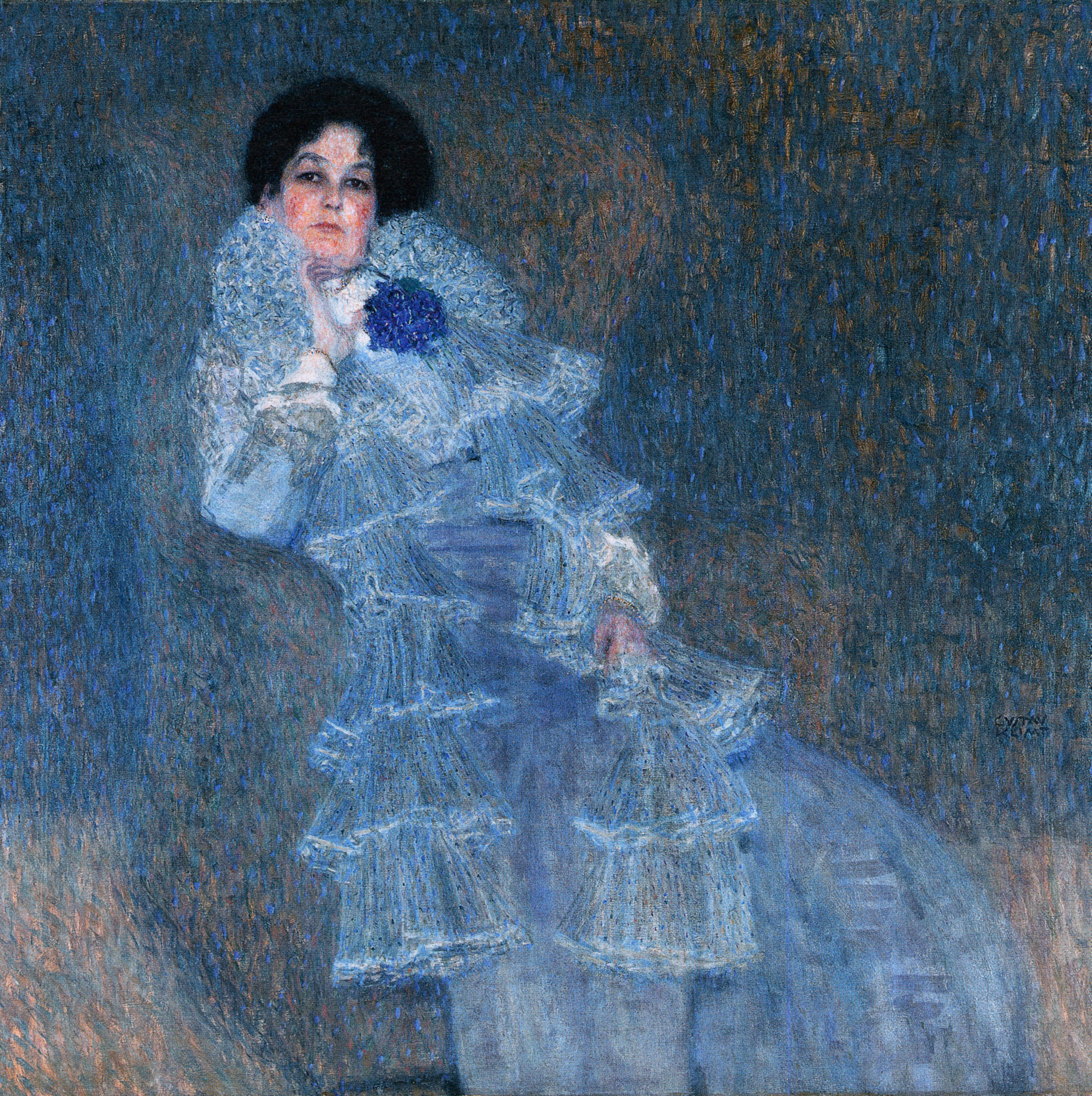art-Klimt.com
Gustav Klimt 1862-1918
Gustav Klimt - Portrait of Marie Henneberg 1902
 Portrait of Marie Henneberg |
From Tate Gallery London:
The earliest instance of cooperation between Josef Hoffmann and Gustav Klimt in the creation of a domestic setting is to be found in the large hall of the villa built for the photographer Hugo Henneberg (1863–1918). The villa is one of a group of four artists’ residences, designed by Hoffmann, built on the Hohe Warte, a semi-rural plateau on the outskirts of Vienna.
Hoffmann’s design for the double-height hall of the Villa Henneberg was developed with Klimt’s commissioned portrait of Henneberg’s wife Marie in mind, its intended setting influencing the painting’s unusual square format (seldom used by Klimt for subjects other than landscape).
The four villas – built for Carl Moll, Koloman Moser, Henneberg and another photographer, Friedrich Viktor Spitzer as an artists’ colony – signal the emergence around 1900 of Hoffmann’s independent and unmistakeable style, creating buildings where ‘the exterior is one with the interior’. The buildings had many features in common such as brick wall construction, white roughcast facing and views over the Vienna Woods. Their interiors while more diverse and suited in each case to the requirements of the client, reveal an overall preference for simple rectilinear shapes and occasional black and white schemes as in the guest room of the Moser villa presented here.
It is to Carl Moll that we owe our most vivid notion of domestic life there. The painted record, shown here, of Moll’s own villa reveals Hoffmann’s striking use of colour, the careful muting and distribution of light, as well as the extension of living space onto terraces and into gardens.